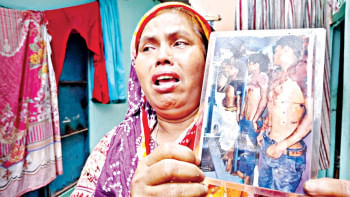Surprisingly high levels of disability in Kushtia
That disability and poverty reinforce each other is a well-appreciated sociological phenomenon. Thus the results for Kushtia district of the latest social welfare department survey into disability come as quite a surprise. While Kushtia has the lowest poverty rate in the country, at around 3%, the approximately 36,000 people with disabilities identified across its six upazilas position the district as having the highest disability rate nationally. The reasons for such an anomalous outcome are yet to be determined.
“Research says that poor nutrition, dangerous working and living conditions, limited access to healthcare, poor hygiene and sanitation, along with natural disasters are among the leading causes of impairment,” says Professor ANM Rezaul Karim of economics department at Kushtia's Islamic University. Rates of disability also tend to be higher in rural areas than in cities and towns.
Yet in many of these factors Kushtia rates quite well as compared to other districts.
“We have found that the poisonous affects of tobacco burning is causing disabilities in infants in Mirpur, Daulatpur and Kushtia Sadar upazilas,” says MA Quader, the executive direction of a local non-governmental organisation that works in the disability field. “We have also observed that among low income earners in the district, where the incidence of disability is high, sharp poverty prevails.”
“However, more research is needed to discover the overall reasons for a high disability rate in Kushtia,” he adds.
For Kushtia's disabled population, life is not easy. Eleven-year-old Alhaj Uddin, for example, from Zagolba village in Khoksa upazila is one of three siblings, all of whom are physically-challenged. “I can eat once a day with my family, either morning or at night,” he says. “The rest of the time I have to manage food from passersby.” Alhaj spends his days sitting on a mat under a roadside tree adjacent to his home. “I do not beg, but passersby know to give me something.”
Alhaj used to have a welfare card, granted by the Khoksa upazila welfare office, which entitled him to a pension of Tk 500 per month. “But this year I have been denied the card,” he says, “for causes unknown.”
According to Kushtia's social welfare department, their funding cannot cope with demand. “We provide benefits to 12,135 people,” says its deputy director Roksana Parvin, “but there are 36,000 people in the district with disabilities.” She says the number of people covered by the welfare scheme is due to rise to 20,427 in the coming financial year, with the monthly benefit each receives rising from Tk 500 to Tk 600.


 For all latest news, follow The Daily Star's Google News channel.
For all latest news, follow The Daily Star's Google News channel. 



Comments